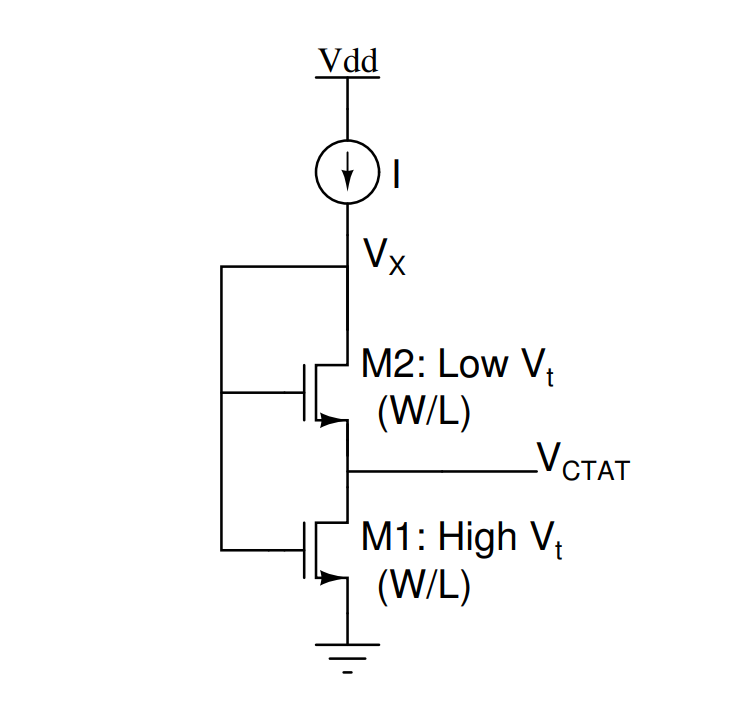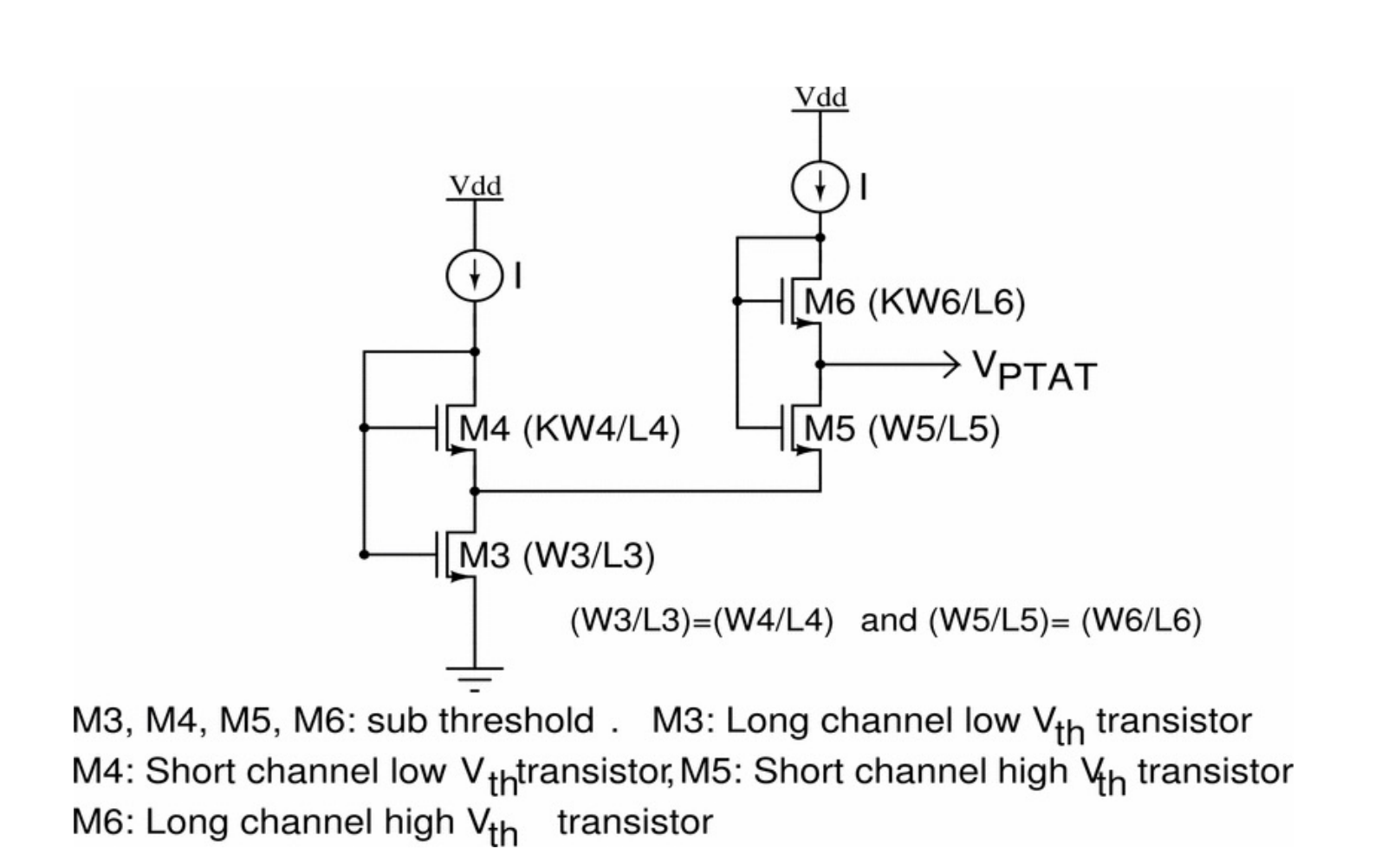The invention provides a temperature, supply invariant, and process tolerant current reference circuit suitable for low-power mixed-signal applications. The circuit integrates a resistor-less beta multiplier using a MOSFET in the triode region and a CTAT (Complementary To Absolute Temperature) voltage generator based on high- and low-threshold voltage transistors. This architecture compensates for thermal, supply, and process variations by stabilizing the output current through sub-threshold operation and controlled gate-to-source voltages. Simulation results in UMC180nm technology demonstrate high precision, wide supply compatibility, and exceptional PSRR performance, making it ideal for wearable, biomedical, and IoT systems.
Designing a stable current reference that is invariant to temperature, power supply variations, and process corners is a longstanding challenge in modern analog and mixed-signal circuit design. Traditional resistor-based references suffer from high variation and poor temperature stability.
- Resistor-less Current Generation: The circuit employs a resistor-less beta multiplier configuration by using a MOSFET in the triode region to eliminate variation caused by on-chip resistors.
- Temperature Insensitivity: The design achieves temperature stability by generating a CTAT voltage reference that compensates for thermal fluctuations.
- Ultra-low Power Operation: The entire circuit operates in the sub-threshold region, significantly reducing power consumption to the nano-watt level.
- Stable Output across Conditions: A dedicated process and temperature tracking circuit stabilizes the output current across manufacturing and environmental variations.
- High Noise Immunity: The circuit demonstrates excellent Power Supply Rejection Ratio (PSRR), exceeding 171 dB at 100 Hz and 160 dB at 100 kHz, making it highly immune to supply noise.
- Wide Supply Compatibility: The circuit functions reliably across a wide supply voltage range from 0.9 V to 1.8 V, maintaining current variation within ±2%.
The prototype consists of a current reference circuit designed in UMC180nm CMOS technology. It includes a resistor-less beta multiplier using an NMOS in triode region and cascaded CTAT voltage generators that ensure temperature stability. All transistors operate in sub-threshold mode to enable ultra-low power consumption. The simulated prototype delivers a reference current of 250 nA with less than ±1% variation across temperatures from -25°C to 100°C, and less than ±2% variation across supply voltages from 0.9 V to 1.8 V. The circuit demonstrates a PSRR greater than 171 dB at low frequencies and remains above 100 dB up to 1 GHz.
A fully designed and analyzed temperature and supply invariant current reference circuit has been developed. It achieves ±0.95% variation over a temperature range of –25°C to 100°C and maintains ±1% variation across a 0.9V to 1.8V supply range, consuming only 450 nW power—making it ideal for low-power analog and biomedical systems.
3
This innovation enables ultra-low power and highly accurate current sources critical in applications like wearable biomedical devices, IoT sensors, and analog front ends for signal processing, ultimately leading to longer battery life and enhanced reliability.
- Analog and Mixed-Signal IC Design
- Biomedical Instrumentation
- IoT and Low-power Electronics
- Industrial Sensing and Control Systems
- Energy Harvesting Devices
Geography of IP
Type of IP
4309/MUM/2015
450811


